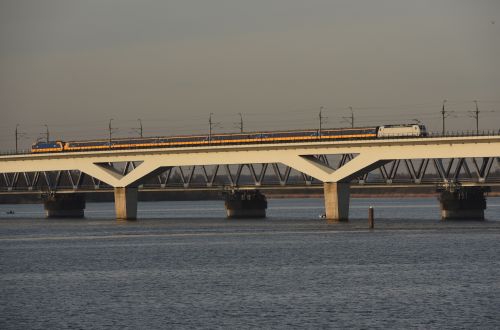Locomotive-hauled services were reintroduced following the withdrawal of the AnsaldoBreda V250 Fyra trains shortly after the start of commercial operations at the end of 2012.
Netherlands Railways (NS) uses Traxx MS140 multi-system electric locomotives, equipped with ETCS Level 2, and ICRm coaches, built in the 1980s, to operate domestic services on the high-speed line. They are due to be replaced by Inter-City New Generation EMUs from 2021.
As the Ministry of Infrastructure (then the Ministry of Transport) allowed use of the conventional rolling stock on HSL South, Infraspeed is claiming compensation from the ministry to cover additional cost of maintaining the track. In the meantime, Infraspeed says it will continue to focus on maintaining the infrastructure to the high standard required for high-speed operations.
The Ministry of Infrastructure says it is unconvinced by Infraspeed’s claim and has ordered Prorail, which manages the conventional Dutch rail network, to investigate the case. The key issue is whether the cause is a matter of maintenance by Infraspeed or the quality of the track. The latter is the responsibility of Infraspeed under its contract with the Dutch state.
Furthermore, the ministry also want to establish the level of wear-and-tear caused by the use of conventional rolling stock, and the cost impacts of this. The outcome of this research should be known soon.
Infraspeed was established in 1999 as a consortium of Siemens Netherlands, Fluor Infrastructure and Royal BAM Group. In 2001 the consortium was awarded a contract to design and build the line’s superstructure and maintain it for 25 years. The deal was the Netherlands’ largest-ever PPP and included an annual payment of more than €105m from the Dutch state. In return, Infraspeed must ensure minimum availability of 99.6%.
Since 2011, Infraspeed’s shareholders have included Fluor Infrastructure, BAM PPP Investments, Innisfree F2C, Infrastructure Investments (HSL Zuid) and Infrastructure Investments Holdings.

